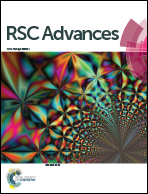Activated carbon and palm oil fuel ash as microwave absorbers for microwave-assisted pyrolysis of oil palm shell waste
Abstract
In this study, the effects of two microwave absorbers (MWAb) or catalysts, namely activated carbon (AC) and palm oil fuel ash (POFA), were investigated in microwave pyrolysis of oil palm shell (OPS). The results show similar trends and ranges of the dielectric properties for both MWAbs when measured using a network analyzer with an open-end probe at 2.45 GHz from room temperature to 100 °C. However, according to the Brunauer–Emmett–Teller (BET) method, AC has a larger specific surface area (SSA) and pore volume than POFA. The higher SSA of the AC allows more molecules of gas or liquid substances to be attached on its surfaces than on POFA. This adsorption does not change the structure of AC or POFA. Therefore, on using AC the phenol content was higher than with POFA, as observed from GC-MS peak areas. Both MWAbs had absorbed liquid or gas molecules that may adhere to the surfaces either physically or chemically (or by both types of mechanisms) facilitating bonding to form different molecules. However, phenol derivatives, overall chemical compositions, and product yields were similar for these two MWAbs, according to ANOVA.



 Please wait while we load your content...
Please wait while we load your content...